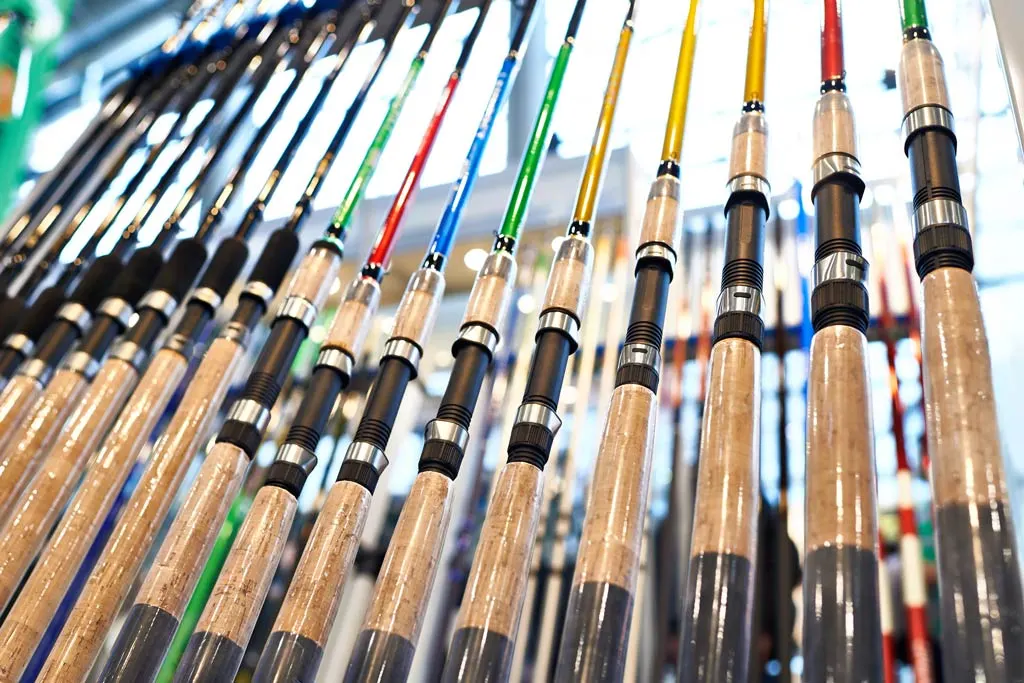Choosing the right fishing rod is essential for any angler, whether you’re casting for bass in a local pond or chasing big game offshore. With so many types of fishing rods available, knowing what to look for can save you time, money, and frustration. In this guide, we’ll break down everything you need to know about how to choose a fishing rod, including rod length, materials, action, and power. By the end, you’ll be ready to pick the perfect fishing pole for your next adventure.
Why Choosing the Right Fishing Rod Matters
A good fishing rod is the backbone of your entire fishing setup. The right rod improves casting accuracy, increases hook-up rates, and helps you land more fish. But not every rod works for every fishing situation.
Think of it this way: You wouldn’t take a compact car off-roading, and you shouldn’t expect a bass rod to land a marlin. Let’s explore how to pick the right fishing rod based on where, how, and what you fish.
Fishing Rod Length: What’s the Best Size?
Fishing rod length usually ranges from 4 to 14 feet. The general rule of thumb is:
Longer rods (8–14 ft): Better for long casts and covering water
Shorter rods (4–7 ft): Offer better control and power for close-quarters fishing
Best rod length for beginners?
A 7-foot fishing rod is a solid all-around choice—it balances cast distance, accuracy, and ease of use.
Use case examples: Kayak fishing or boat fishing near structure → Choose a shorter rod (5–7 ft) for control and power.
Shore or surf casting . Use a longer rod (8+ ft) for extended casting range. Fishing Rod Materials. Fiberglass vs Graphite vs Composite. The material of your fishing rod affects its strength, sensitivity, weight, and price. Here’s a breakdown of each:
Fiberglass Rods
Pros: Durable, affordable, ideal for beginners
Cons: Less sensitive, heavier. Perfect for anglers who need a rod that can take a beating, fiberglass rods are great for trolling or fishing with live bait.
Graphite Rods
Pros: Lightweight, highly sensitive
Cons: More brittle, typically more expensive. Graphite rods are perfect if you’re using finesse techniques or need to detect subtle bites. Look for designations like IM6, IM7, or IM8—the higher the number, the lighter (not stiffer) the rod.
Composite Rods (Fiberglass + Graphite)
Pros: Versatile, balanced, strong yet flexible
Cons: Generally more expensive. Composite rods combine the best of both worlds and are ideal for anglers who fish in a variety of environments.
Rod Action: Fast, Medium, or Slow:
Rod action describes how much the rod bends and where it bends along the blank.
Fast Action
Bends near the tip
Ideal for single-hook setups (worms, jigs)
Excellent for quick hook sets and big fish
Best for: Bass, Muskie, Tuna, Billfish
Medium Action
Bends in the top half
Good for treble hooks and multiple lure types
Versatile and beginner-friendly
Best for: Walleye, Trout, Catfish
Slow Action
Bends throughout the length of the rod
Ideal for small lures and light bites
Allows for long, smooth casts
Best for: Panfish, Trout, finesse fishing
Rod Power: Light, Medium, or Heavy:
Rod power refers to how much force is needed to bend the rod. Match the power rating to the type of fish you’re targeting:
Ultra-Light: Great for panfish and small trout
Medium: All-purpose choice for bass, walleye, etc.
Heavy: Used for big game fish like pike, muskie, or saltwater species
Tip: Pair your rod power with the right fishing line and lure weight to maximize performance.
Final Tips on Choosing a Fishing Rod:
1.When choosing a fishing rod, ask yourself:
2.Where will I be fishing? (Boat, shore, freshwater, saltwater)
3.What species am I targeting?
4.What techniques will I be using? (Casting, trolling, jigging, etc.)
5.Am I a beginner or experienced angler?\

